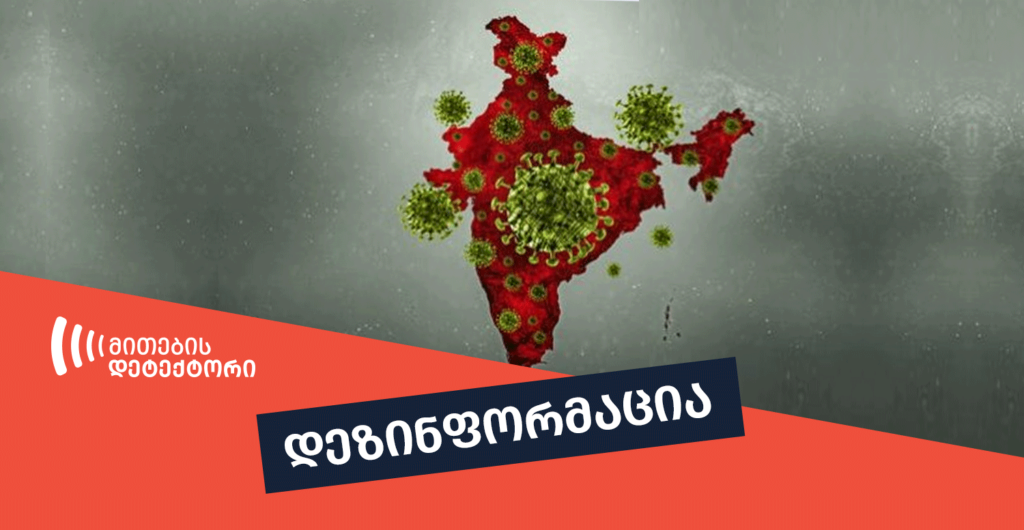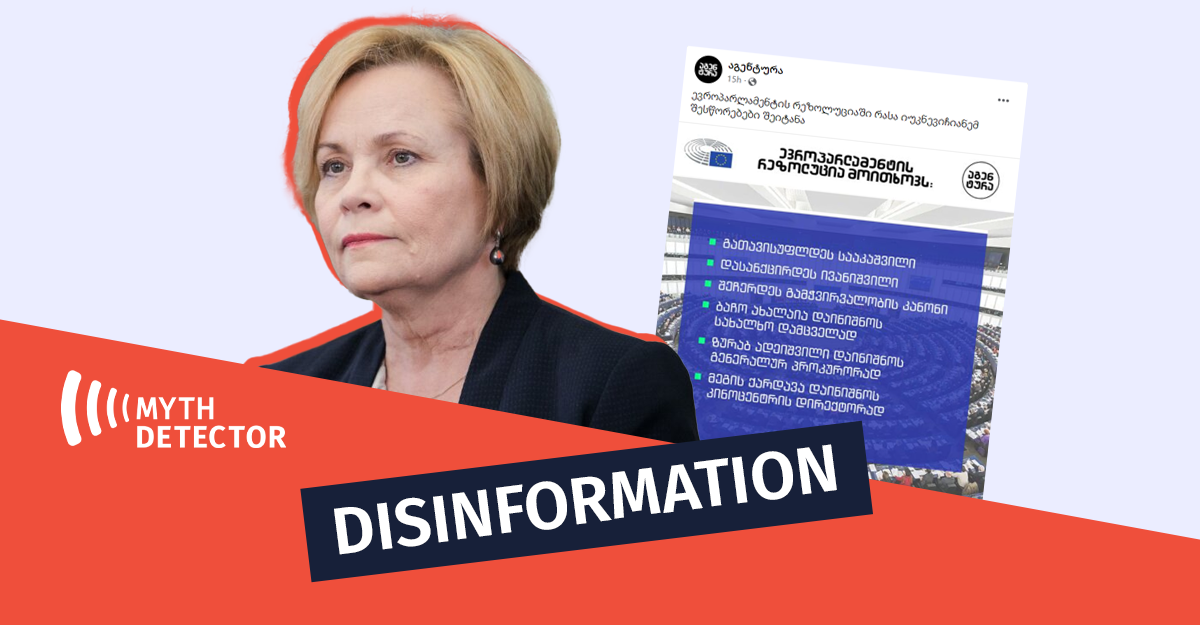Claims are being spread on Georgian social network about the second wave of the coronavirus in India:
- Facebook users Goria Shiva and Shore Shanidze: People are not dying from the coronavirus in India;
- Facebook user Samkaro Samkaro: The ჩovid pandemic in India is staged, people are dying from vaccines, that were rejected by other countries;
- Zviad Tomaradze, leader of “ერი და სახელმწიფო”(“Nation and State”): The pandemic in India is staged
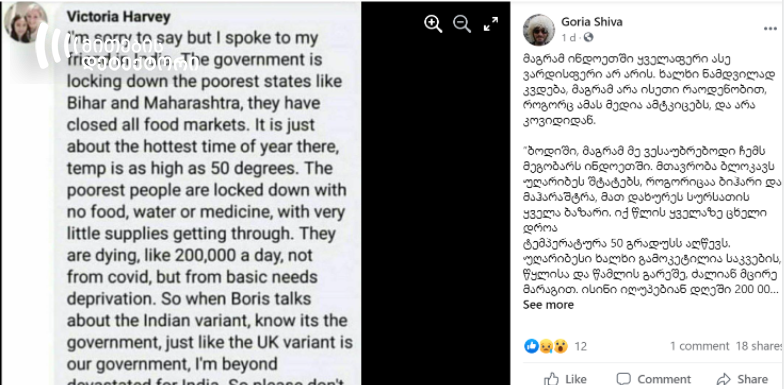
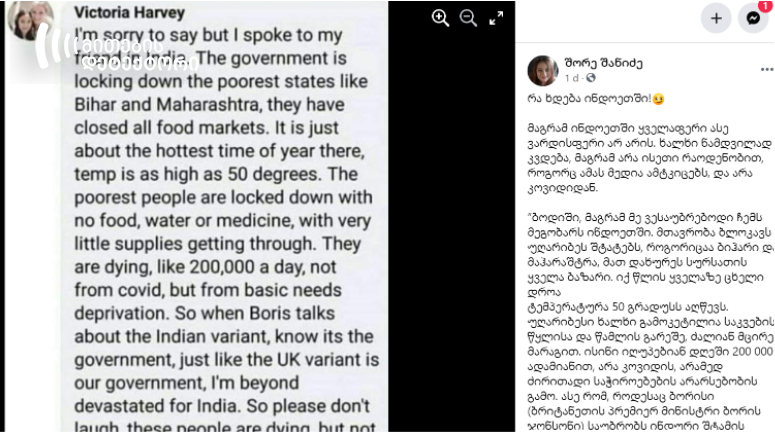
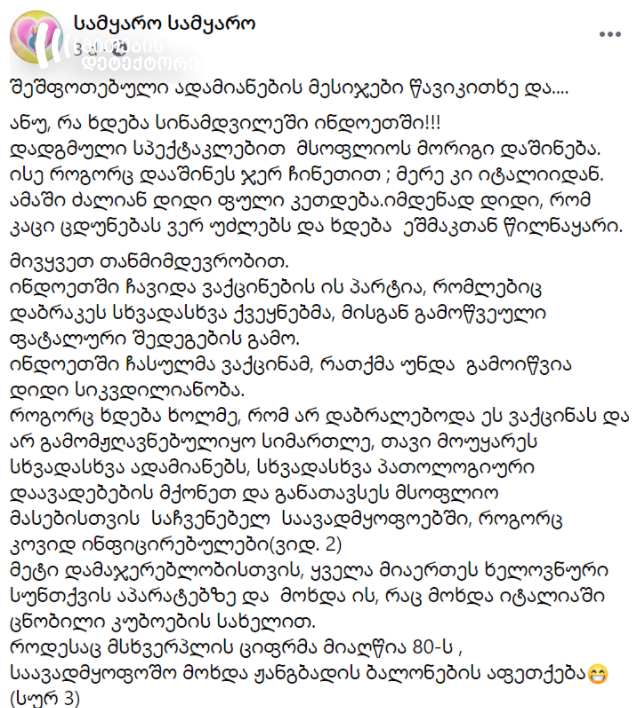
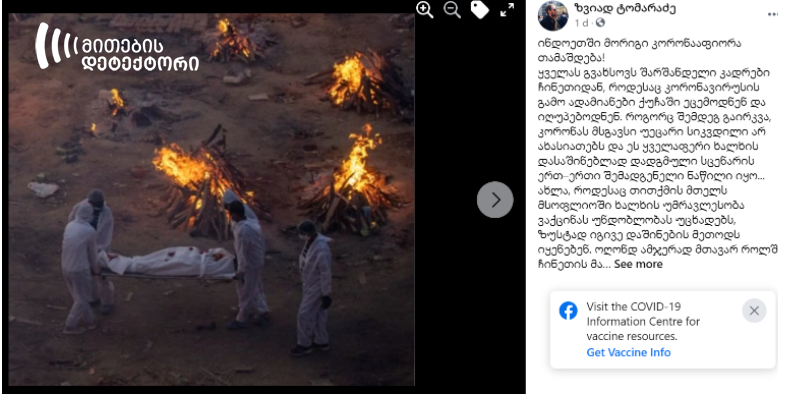
These claims are disinformation, since a mass second wave of the coronavirus in India started in early April because of mass gatherings, sluggish vaccine rollout and new variants of the coronavirus, which was followed by a collapse of the health system and increase of the mortality rate. Covidsheild and Covaxin vaccines are used for vaccination in India and none of these were rejected by other countries.
Just on April 28, 379 459 new cases of Covid-19 were confirmed in India, 3 647 people have passed away. This sort of mass spread of the virus is attributed to mass gatherings, slow vaccination process and new coronavirus variants. A high mortality rate is linked to the health system’s lack of preparation, soon after the second wave hit in the country, “bed-funds” got filled up, which made it impossible to receive the necessary medical support, thus causing the mortality rate to rise.
- What do we know about the so-called “Indian variant” of Covid-19?
One of the reasons for the spread of Covid-19 in India is attributed to the so-called “Indian Variant”. Viruses tend to mutate, this process happens naturally and mutated viruses become either stronger or weaker. This is true for Covid-19 as well. It went through several mutations and one of them is the “Indian variant”. Officially, this variant of the virus is called B.1.617 of SARS-CoV-2. Moreover, B.1.617 carries two mutations, which are: E484Q and L452R. Both of them are separately found in other coronavirus variants, but they have been reported together for the first time in October 2020 in India. The term “Indian variant” was settled for this reason, but it is impossible to identify where this variant originated from.
It should also be noted, that it is not known yet if the variant B.1.617 spreads faster or not. Investigations in this regard are currently actively being conducted in Great Britain. Even though scientists think, that the rapid spread of the new variant in India is one of the main reasons for the crisis, it is impossible to say for sure with current data. According to BBC, investigating gets more difficult due to the fact that below thousand samples were shared of the “Indian variant” for scientists’ research, whereas 384 thousand samples were shared for studying another new variant detected in Britain.
- One of the main reasons for the second wave of coronavirus in India are mass gatherings
One of the main reasons for the massive spread of coronavirus in India is attributed to mass gatherings. According to K. Srinath Reddy, president of the Public Health Foundation of India, because of the reduction of cases in January 2021, people assumed that the pandemic was over and virus surveillance took a back sit for the state as well.
For this reason, mass gatherings were happening without any restrictions. For example, on April 1, an annual religious event, Kumbh Mela was allowed in the state of Uttarakhand. 3.5 million Devotees gathered during the event. The event became a ground for a massive spread of the virus and as a result, just in Uttarakhand 2000-2500 cases were being detected in mid-April, when the number of cases was 30-60 in February.
Another example of mass gatherings and the hit of the second wave was detected in West Bengal. The state was electing a new government, voting started on March 27 and should have ended on April 29, but already on April 1, 6 519 cases were reported in this state and on April 26 – 15 992 cases.
- India does not use vaccines “rejected” from other countries for vaccination
At the time Covidshield and Covaxin vaccines are being used in India. Covidshield is produced by Korean AstraZeneca-SKBio and the Serum Institute of India, to which the WHO issued an Emergency Use Authorization on February 16, 2021. As for Covaxin, it is being produced in India and has the authorization of Drugs Controller General of India. None of these vaccines were rejected by any countries and given to India. Currently the vaccination process is slow in India, which makes the situation harder.
Out of 1.38 billion population of India, only 8.88% of the population has received one dose of the Covid vaccine and only 1% is fully vaccinated.
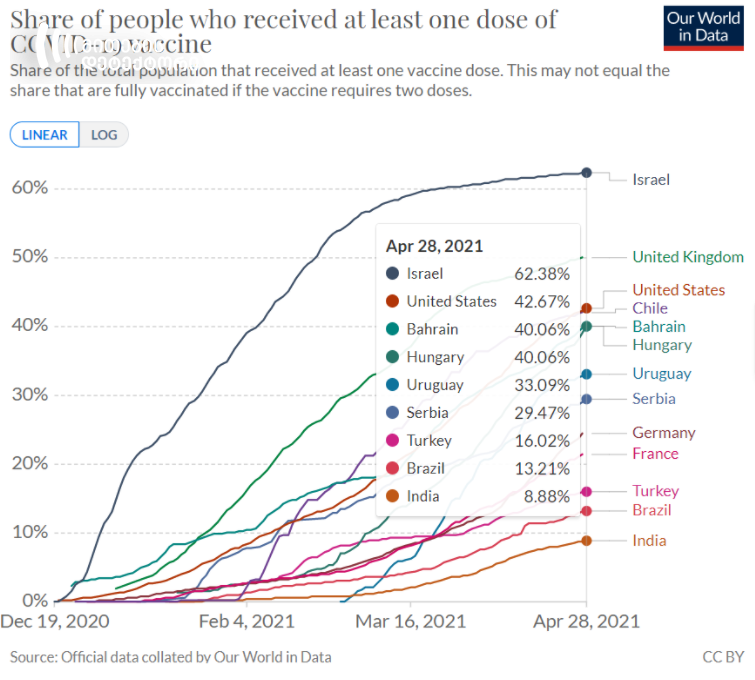
Covid-19 vaccination in India began on January 16, 2021, the government was criticized various times for not having enough vaccines. A stronger second wave of the virus, caused by mass gatherings and violating regulations at the beginning of April is also attributed to insufficient vaccines and poorly organized vaccination campaigns.
The article has been written in the framework of Facebook’s fact-checking program. You can read more about the restrictions that Facebook may impose based on this article via this link. You can find information about appealing or editing our assessment via this link.
Read detailed instructions for editing the article.
Read detailed appeal instructions.

















